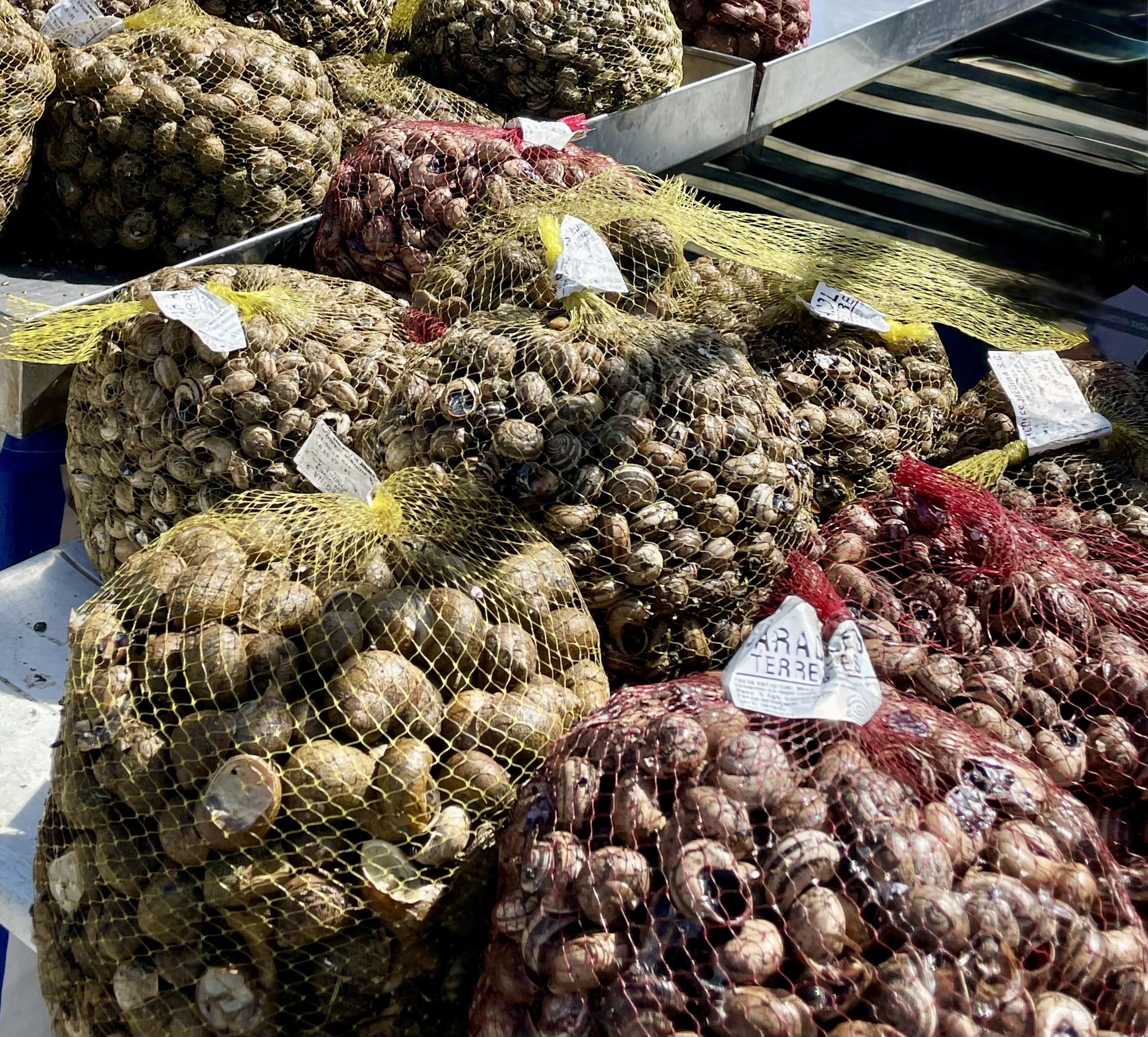
Snail male
May 23, 2025
When it comes to food, I’m no Anthony Bourdain or even a Stanley Tucci. I’m more like a four-year-old who won’t eat food that touches and absolutely nothing either green or slimy. In short, I’m most definitely not a candidate to embrace Rota’s 9th annual Ruta Caracol.
This exotic celebration runs throughout the month of May and features an otherwise garden pest, the common land snail, suddenly elevated to culinary delight. The little ones are called caracoles and the larger ones cabrillas, both of which are smaller than France’s escargot.
Like I’ve said, I’ve slurped my share of oysters, sucked the heads of many a crawfish and chomped on the soft exoskeletons of full-sized crabs, but the look and feel of those two eyeball antennae sliding down my gullet was psychologically stomach churning for some reason.
Smaller is not better when it comes to these slime streamers. Carol and I saw these mysterious fishnet sacks of what looked like barnacles showing up in fresh markets during our stay here. At first glance I thought it might be some maritime commodity used to flavor a seafood dish, like squid ink. (Not that that made it any more appetizing, mind you.)
Turns out caracoles and cabrillas are a main dish in themselves, and quite a popular one, as Spaniards are second only to France in the consumption of snails (though well behind, say, a Chinese wet market in terms of consuming things that are disgusting.)

I grew up in New Orleans where the first rule of eating is “if you don’t know what it is, fry it.” Yet, I thought I’d skate by this cultural comestible, even though I’d successfully navigated raw oysters, crawfish and soft shell crabs in my youth. I’d even conquered escargot, which I’ve described as a butter, garlic and basil delivery system that left you chewing on a rubber band after you’d sucked off the sauce.
But these little slithering snot balls were a bridge too far for me. This especially after my Spanish chef Javier shared a childhood tale of walking into his kitchen one morning to see his mother’s dinner purchase crawling over the kitchen table, chairs, stove and walls. I’ve had cold sweat nightmares less harrowing than that image.
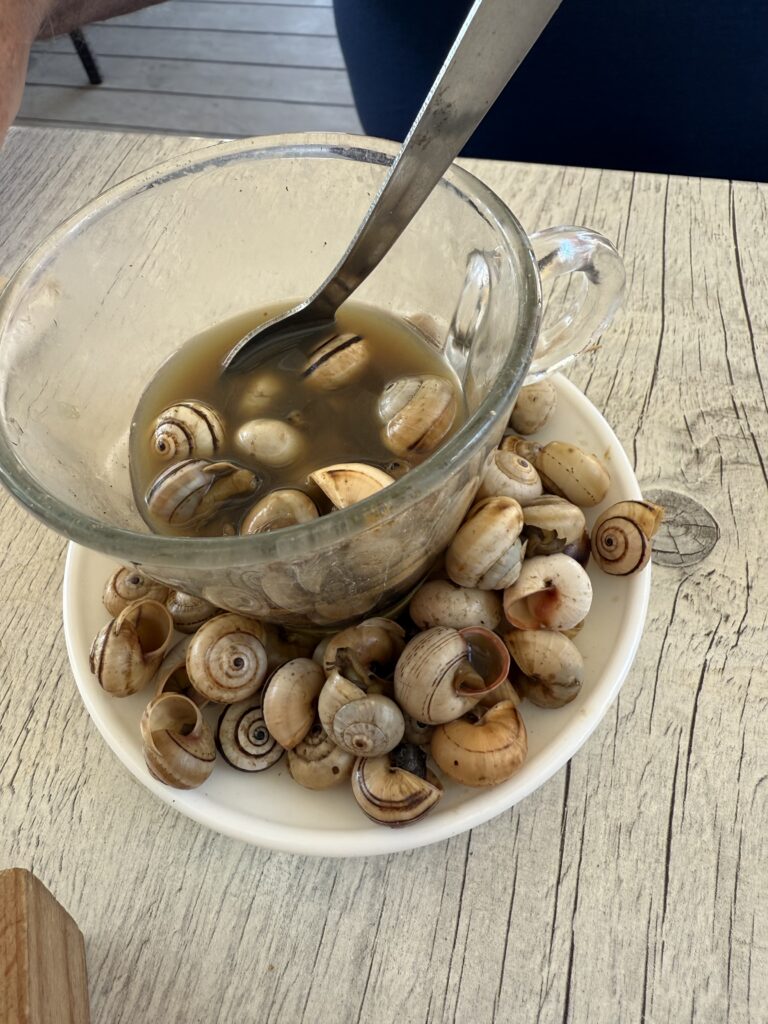
But Carol, about as squeamish as me when it comes to what’s edible as opposed to what should immediately be pushed down a garbage disposal, was keen on finding out what all the fuss seemed to be about.
And so it was, with seasick pills at the ready, that we strapped in at the little corner cafe El Tronio and ordered the smallest portion of caracoles and cabrillas that were available. Even that proved to be far too many.
The thing is these little fellas are boiled whole and stay that way until you poke them out of their shells with a toothpick. (The pros just suck them out, but I found myself reaching for the seasick pills after a couple of those.) The problem is they come out cooked the way they looked and lived alive: eyeball antennas and all.
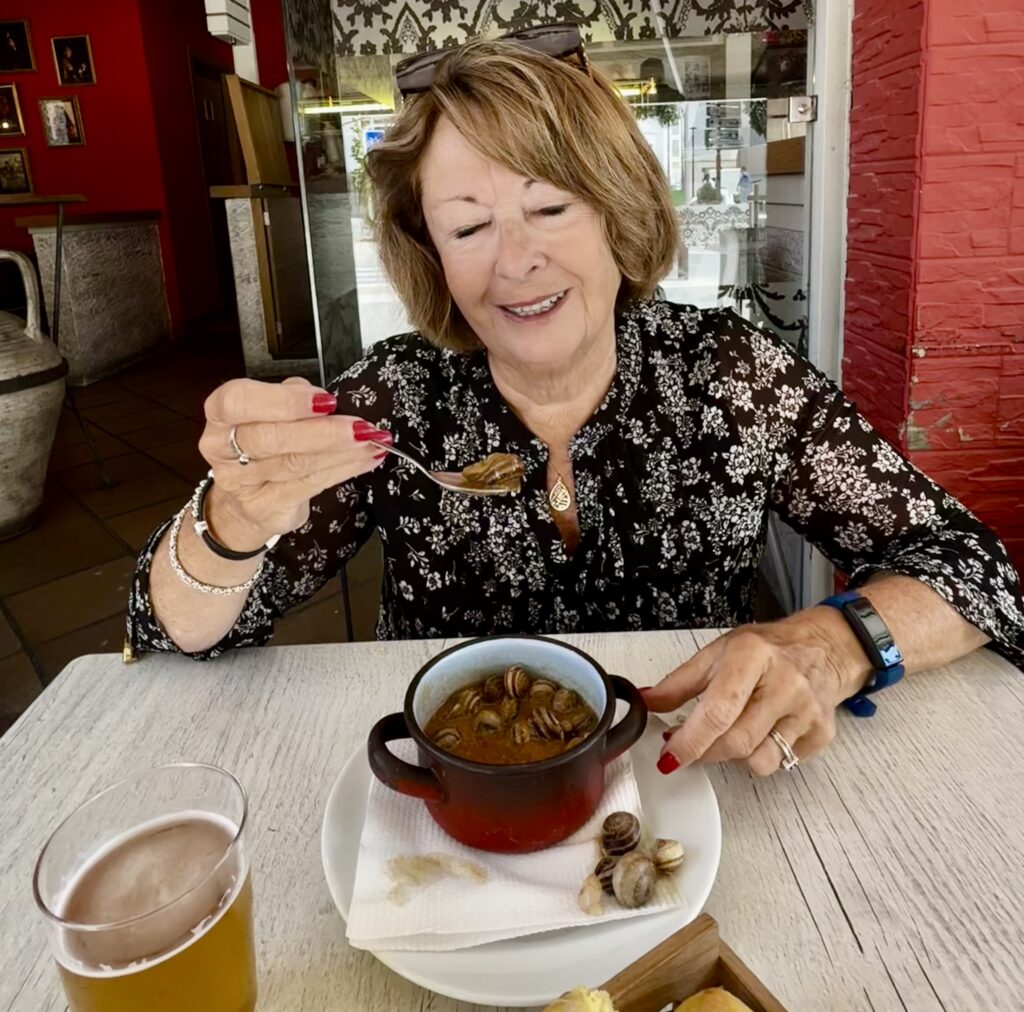
Like I’ve said, I’ve slurped my share of oysters, sucked the heads of many a crawfish and chomped on the soft exoskeletons of full-sized crabs, but the look and feel of those two eyeball antennae sliding down my gullet was psychologically stomach churning for some reason.
I can’t quite put my finger on why, and I’m just happy I never had to put my finger on any of them as well. I spread a pile of the little blameless mollusks around my plate to make it look like I’d eaten more of them so as not to insult our hosts, but we still left the better part of half an order in the bowl.
I tried to wipe away the memory of the experience with a plate of french fries later that day, but I swear every one of them had antennae poking out.
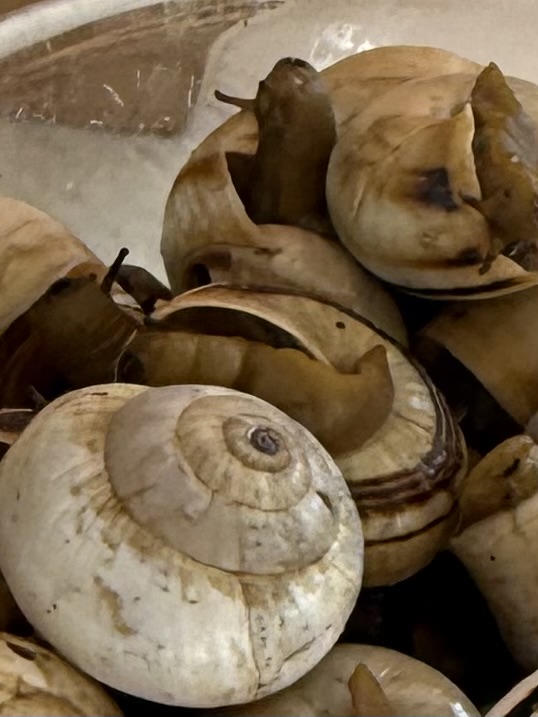
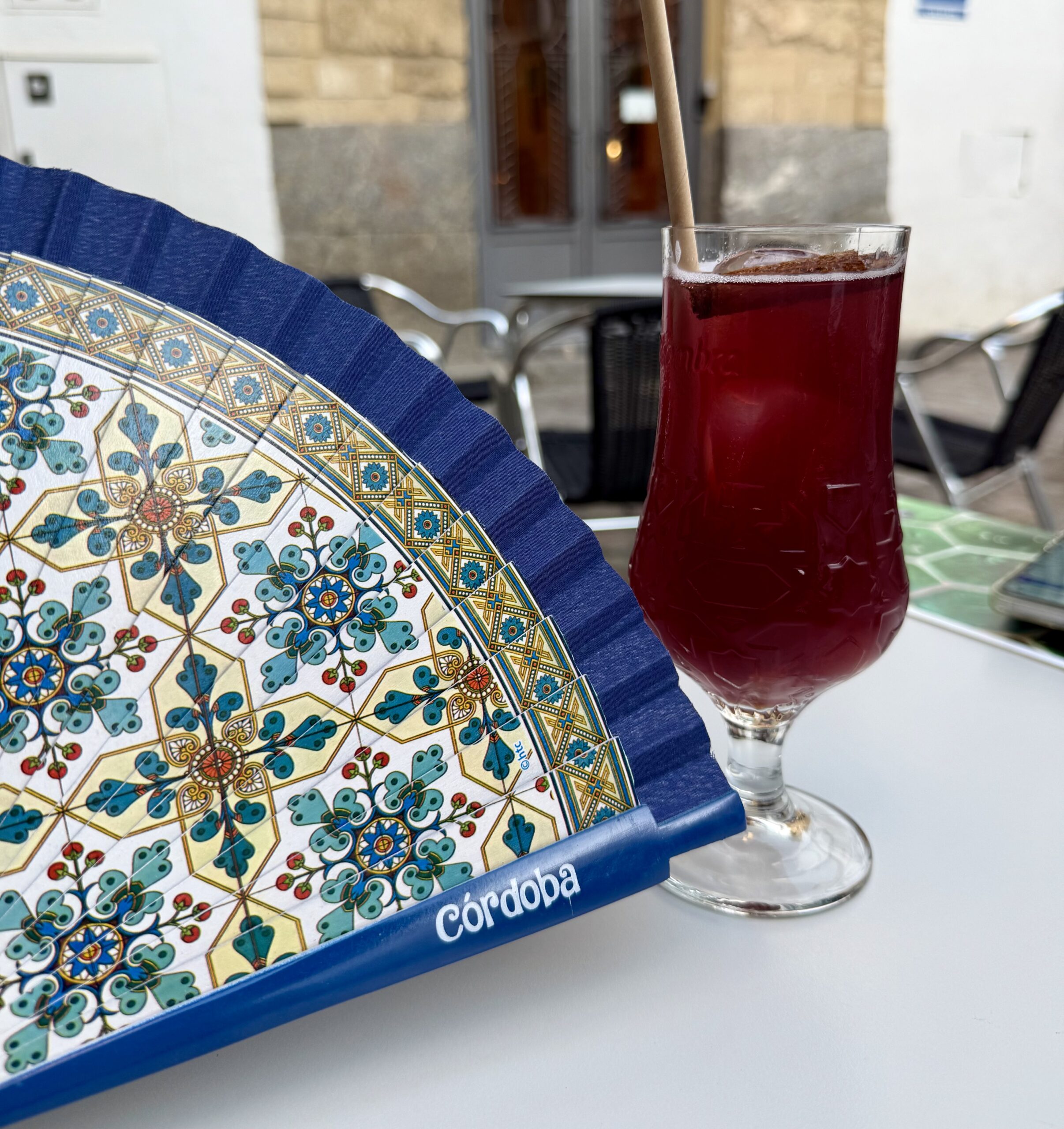


Be the first to comment